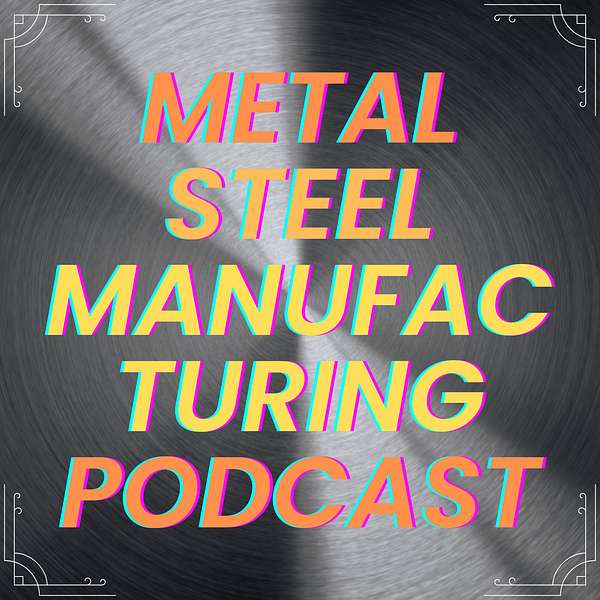
Metal Steel Manufacturing Podcast
Welcome to the Metal Steel Manufacturing Podcast. We're here to show the world how valuable the manufacturing, metal, and steel industries are. Without this industry, society wouldn't be where we are today; it makes our daily lives possible. We are the forgotten industry and highly undervalued in today's market, collective, and zeitgeist. It's time to change that. Most importantly, to give a platform and pay it forward to the undiscovered leaders, experts, and change-makers who bring purpose, new thought, innovation, and new mindsets not shared enough within trades. I'm Greg Sheldon, 21 years strong in the metal, steel, and manufacturing industry, whether hands-on tools, fabrication, welding & wrenching to design, installation, finishing work or sales, strategy, vision, and leadership. I'm here to ditch the small talk and reignite the excitement for manufacturing and trade in North America.
Metal Steel Manufacturing Podcast
How to Read Company Financials Part 3 - Understanding the Cash Flow Statements
How to Read Company Financials Part Three - Understanding the Cash Flow Statements with Stacey Bennett.
Connect with Stacey https://theslcgroup.co/
Watch the episode: https://youtu.be/0x898NQKEx0
Thank you, Stacey, for your invaluable contribution to enlightening us about accounting, business profitability, and taxation. Your insights have enriched our understanding of these complex subjects, empowering business owners and professionals. Your dedication to educating and sharing your expertise is commendable and appreciated. Your readiness to engage further in a Q&A session underscores your commitment to your profession. We sincerely thank you and look forward to continued opportunities with you.
The Metal Steel Manufacturing Podcast recently featured an episode that delved into the financial statements of businesses, specifically the income statement, balance sheet, and statement of cash flows. Stacey Bennett and Greg Sheldon discussed the importance of these statements in understanding a business's financial health.
The income statement reflects a business's income from sales and operating activities. On the other hand, the balance sheet shows the balances of all asset and liability accounts and any movement in and out of those accounts. The statement of cash flows summarizes both the income statement and balance sheet, and it shows the net cash flows from operating, financing, and investing activities, as well as the cash and cash equivalents.
One of the most important takeaways from the episode was that the statement of cash flows is crucial in understanding a business's cash health. It breaks down the cash received from sales and factors in paying the owner and debts to arrive at a business's actual amount of money. This is particularly important for making business decisions about spending, investing, and taking distributions.
Cash and cash equivalents are considered liquid assets that a business has on hand, such as cash, bank accounts, and cryptocurrency. Banks use a business's profitability and liquidity to determine whether to loan money. If a company has a ton of debt and very little cash assets, banks are less likely to lend them more money, knowing that, realistically, they cannot afford to pay back what they currently owe.
The statement of cash flows is divided into three sections: operating activities, investing activities, and financing activities. Profit creates taxability and draws from a business hit the changes in the equity section of the statement of cash flows, not the profit section.
Spending all profits on business expenses can prevent a business from creating a chunk of cash flow when things go wrong. This can result in a lack of strong enough liquidity, making a business less likely to take out financing.
In conclusion, understanding
This podcast is about creating awareness and recognizing the industrial space like metal, steel, manufacturing, and welding; while providing value to help you in your career and business endeavors.
Greg Sheldon
https://www.facebook.com/metalsteelmanufacturingpodcast
https://www.instagram.com/metalsteelmanufacturingpodcast
https://twitter.com/metalsteelpod
https://www.youtube.com/channel/UC1d1DruXYETxna6GWtBBVng
https://www.tiktok.com/@metalsteelmanufac